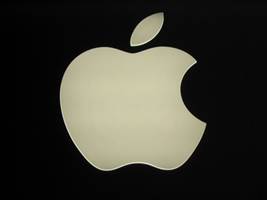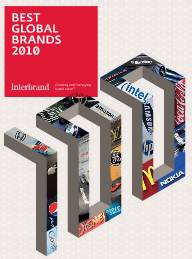Branding

Branding is the way in which a firm differentiates itself and its productsfrom those of their rivals. The term originated from the use of a hot iron to leave a mark on livestock to prove ownership.
So what exactly is a brand? The Dictionary of Business and Management describes a brand as:

Brand
A brand is a name, sign, colour or symbol used to identify items or services of the seller(s) and to differentiate them from goods of competitors.

Firms will always attempt to protect their brand name as this may be their most valuable asset. Coke is ranked best global brand in 2010 by brand consultancy Interbrand for the 11th consecutive year, with a value estimated at $70.7bn. IBM was remained in second place up 7% from 2009 to $64.7bn, while Microsoft retained third place on $60.9bn. Google climbed from seventh to fourth place and increased its brand value by 36% to stand at $43.5bn
![]() An unregistered trademark is recognised by the letters TM - although unregistered the firm may still be protected from other firms using the brand name under misrepresentation laws, although protection may only operate within in the geographical area where it has been used.
An unregistered trademark is recognised by the letters TM - although unregistered the firm may still be protected from other firms using the brand name under misrepresentation laws, although protection may only operate within in the geographical area where it has been used.
 Once legally protected a brand name becomes a registered trademark. The owner may take legal action for trademark infringement to prevent unauthorized use of that trademark.
Once legally protected a brand name becomes a registered trademark. The owner may take legal action for trademark infringement to prevent unauthorized use of that trademark.
Brand names may be supported by catchphrases, slogans and logos that provide visual or auditory recognition for the product:
- symbol - Nike swoosh
- logo - Microsoft graphic
- a character - Frosties Tiger
- a sound - Intel inside
McDonalds, for example, combines a well recognised brand name with its Golden arches logo and the slogan "I'm lovin' it".
Much research has taken place on the psychological meaning of a brand. Brand experience refers to customer's thoughts, feelings, perceptions, beliefs and attitudes when they make their purchase. Over a period of time if these emotions are shared they combine to build into a brand image, with which loyal customers identify. Ideally, if a firm has marketed its product successfully, customers will use positive descriptors like 'trust, value, modern and fashionable' when asked for their opinions of its brand.
Brand names come in many different forms:
- Acronym - a name made up of initials, such as BMW, BP, KFC or IBM
- Descriptive or functional - representing a product benefit like Sparkle window cleaner or Mop and Glo floor cleaner
- Evocative- names that evoke a relevant vivid images like Fairy, Crest or Paramount
- Neologisms- Completely made-up words or phrases like Accenture (derived from 'accent on the future'), Aviva, IKEA or Motorola
- Personal names - products may be named after the original founder such as Chevrolet and Ford or combinations of names such as Adidas (after Adi Dassler)
- Abbreviations - Xerox is abbreviation of the word xerography
- Foreign language terms - Volkswagenliterally means "the people's car" in German
- Mistakes - Google is a misspelling of Googal, a very large number
- Geographical regions or landmarks - like Fuji Film or Olympus (the highest mountain in Greece)
- Myth- many brands use mythical characters like Nike the Greek goddess of victory
- Association - In 1976 Steve Jobs was working in a community farm in Oregon which made him think of Apple
Evidence of a truly successful brand is when that brand name becomes interchangeable with the generic name of the product. For example, people may say things such as:
- "I am going to Hoover the carpet" (vacuum)
- "May I have a rum and Coke" (cola)
- "I'm going to sneeze - pass me a Kleenex" (tissue)